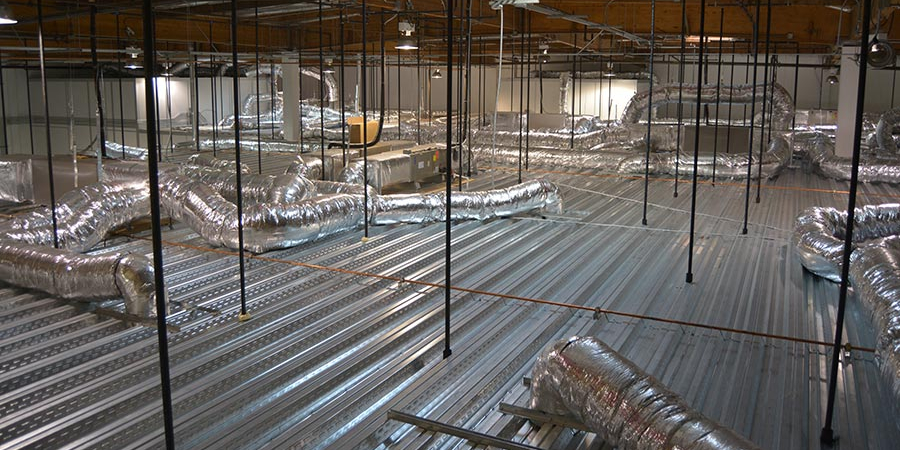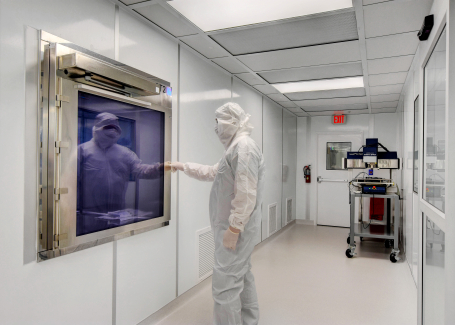Have you ever entered a stuffy room, where your first impulse was to open a window? What you were trying to do, without realizing it, was replace the stale air with outdoor air. That heavy air you experienced? It was likely due to poor ventilation, which can lead to a buildup of airborne particles, carbon dioxide, and humidity. Proper ventilation, which is the job of any HVAC system, is managed by controlling the number of air changes per hour (ACH). It is a measurement used in cleanrooms, office spaces, and even homes to ensure air quality. In this article, we will define what an air change per hour is, how to calculate for air changes per hour, the importance of them in a cleanroom context, and more.
What is an ‘Air Change Per Hour’?
Air changes per hour (ACH) is a measurement that tells you how many times the air in an indoor space is completely replaced in one hour. It is used to gauge how well ventilation systems work in a given area, as well as how “clean” or “dirty” a space is relative to another. Air changes per hour may also be referred to as the “air exchange rate” or “air change rate,” and are either abbreviated as ACH or ACPH.
In any room or space, several factors influence ACH, including the size of the room, the type of ventilation system, and the presence and type of air filters. In general, controlling ACH is a necessary part of maintaining indoor air quality.
(NB: It is important to note that air being completely “replaced” is a theoretical concept. It assumes perfect mixing of air, meaning the old air and new air are completely and evenly blended. In real-world conditions, this perfect mixing does not always occur, so the actual distribution of fresh air might vary.)
How to Calculate Air Changes Per Hour (ACH)
Calculating air changes per hour (ACH) might seem complex at first, but it can be broken down into a simple formula. Here are step-by-step instructions to calculate ACH.
1. Measure the room volume
First, you need to determine the room volume in cubic feet. This is done by multiplying the length, width, and height of the room.
- Room Volume = Length (ft) x Width (ft) x Height (ft)
2. Determine the airflow rate
Then, find out the airflow rate of your HVAC system. This is usually measured in cubic feet per minute (CFM).
The airflow rate indicates how much air your system can move in and out of the space every minute.
To find the CFM of your HVAC system, you can refer to the system’s manual, check the specification label on the unit, or consult with the manufacturer. Some systems allow you to measure the airflow rate using an anemometer or similar device.
3. Calculate the air changes per hour
Finally, use the following formula to calculate ACH:
- ACH = (CFM x 60) / Room Volume
The result will give you the number of times the volume of air in the room is replaced each hour.
Example Calculation
To make this as clear as possible, let’s try illustrating with an example.
Consider a room that is 20 feet long, 15 feet wide, and 10 feet high. By following the first step, we can multiply the length, width, and height to arrive at a room volume that is 3,000 cubic feet. Then, we find out that our HVAC system supplies air at 500 CFM. Using the room volume and CFM, we can calculate the ACH of the room as follows:
- ACH = (500 CFM x 60) / 3000 = 10 ACH
In other words, the air in the room is replaced 10 times each hour.
Air Change Rates for Different Environments
To provide context, here are typical ACH rates for various environments:
| Environment | Typical ACH Range |
|---|---|
| Hospitals | 6-40 |
| Laboratories | 6-12 |
| Offices | 4-8 |
| Classrooms | 6-20 |
| Residential Spaces | 0.5-2 |
| Cleanrooms (ISO 5) | 240-480 |
| Cleanrooms (ISO 7) | 60-90 |
How are Air Changes Per Hour Important in Cleanrooms?
In the world of cleanrooms, strict regulations are the norm. Cleanroom engineers calculate the required ACH to ensure both air quality and compliance. As you may have guessed, cleanrooms require a high number of ACH to keep spaces contaminant-free. In fact, the relationship between ACH and particle levels is direct: higher air change rates result in lower particle concentrations and better indoor air quality.
Cleanrooms are typically classified by the International Organization for Standardization (ISO), which sets categories regarding the size and number of particles permitted per cubic meter of air. To reach each ISO class, spaces have to meet recommended air changes per hour requirements. For example, an ISO Class 5 cleanroom may require an ACH rate of 240-480, whereas an ISO Class 7 cleanroom may only require an ACH rate of 60-90.
This means that cleanroom engineers must carefully calculate and maintain the appropriate ACH to meet the right ISO classification.
What are the ISO Cleanroom Air Change Rate Requirements?
As we mentioned previously, the International Organization for Standardization (ISO) provides guidelines for cleanroom classifications based on the allowable size and number of particles per cubic meter of air. Each ISO class requires a specific ACH to reach compliance, shown as follows:
| ISO Class | Air Changes Per Hour Range |
|---|---|
| ISO 1 | 500-750 ACH |
| ISO 2 | 500-750 ACH |
| ISO 3 | 360-540 ACH |
| ISO 4 | 300-480 ACH |
| ISO 5 | 240-480 ACH |
| ISO 6 | 150-240 ACH |
| ISO 7 | 60-90 ACH |
| ISO 8 | 5-48 ACH |
These numbers are only estimates and can vary significantly, depending on factors such as room size, design, number of occupants, and specific cleanroom activities. Engineers must consider these variables to determine the best air change rate to reach and maintain the desired air quality.
The Bottom Line
Air changes per hour (ACH) is an important metric used to help cleanrooms and other spaces improve or maintain air quality. Though the calculations can seem complicated, it is simply the number of times that the air is completely replaced in one hour. Understanding ACH helps HVAC systems control air quality, and in a cleanroom context, helps ensure product and lab safety.






